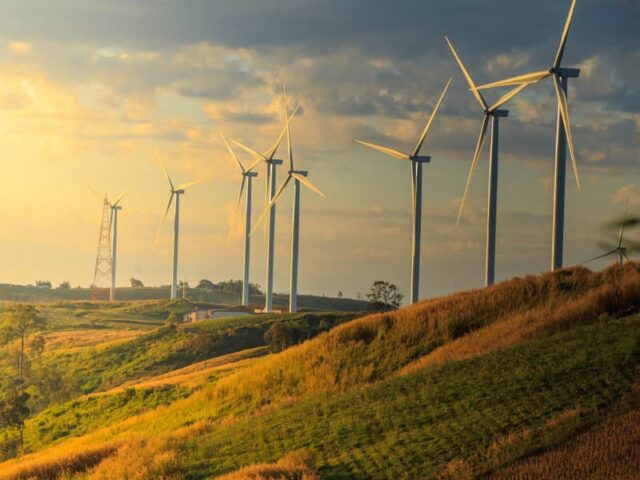India is on the right track for non-fossil fuel energy production, as it achieved this huge feat with 9 years to spare.
Some Details
“At COP 21, as part of its Nationally Determined Contributions (NDCs), India had committed to achieving 40% of its installed electricity capacity from non-fossil energy sources by 2030. The country has achieved this target in November 2021 itself,” the Ministry of New and Renewable Energy said.
The statement continued to say that the country’s functional renewable energy (RE) capacity stands at 150.05 GW, while its nuclear energy-based functional electricity capacity is 6.78 GW. This puts the effective capacity to 156.83 GW, which is 40.1% of the total installed electricity capacity of 390.8 GW.
Why Is This A Big Deal?
India’s Nationally Determined Contribution (NDC) at Conference Of The Parties 21 (COP 21) was to achieve the Sustainable Development Goals by means of NDC by 2030. Being a developing nation of over 138 crores, this was no easy feat to achieve and yet, here we stand in front of the international forum, 9 years ahead of schedule.

Besides this, it has several humanitarian aspects, wherein the carbon footprint of the generation of electricity reduces a lot. This also renders less dependency on fossil fuels and builds confidence in nuclear-based energy wherein after the horrors of Chernobyl and Japan there was skepticism about the same.
India’s contribution to the world’s carbon dioxide emission has been a mere 1.97 billion tonnes, compared to the States’ being at 5.19 billion tonnes and China standing tall at 9.86 billion tonnes. India, even though having a minimal part in the problem, wants to be part of the solution at a global level.
What Else Does India do?
India covers 2.4% of the world’s surface area and houses 17.5% of the world’s human and cattle population each (this begs the question, are we humans actually cows?).
India has 30% of the people living in poverty and at least 20% of people without proper housing. This puts into perspective how humongous the achievement was, especially with India’s priority being poverty eradication.
Also Read: A Woman From Canada Becomes The First Person To Be Diagnosed With Climate Change
India has now set up a new 175 GW Renewable energy target by 2022, divided among 100 GW of solar, 60 GW of wind, 10 GW of biomass, and 5 GW of small hydel energy. Besides this, India aims to build climate-resilient Urban Centres and sustainable green transportation networks.

Furthermore, India aims to better adapt to climate change by enhancing investments in development programs in sectors vulnerable to climate change, particularly agriculture, water resources, the Himalayan region, coastal regions, health, and disaster management.
Last but not least, India has set up a fund of INR 350 Crores (USD 55.6 million) for the National Adaptation Fund, which fosters adaptability towards climate change.
Image Sources: Google Images
Sources: Ministry of Environment, Forest and Climate Change, Mint, Business Standard
Connect with the Blogger: Shouvonik Bose
This post is tagged under: fossil fuel, renewable energy, wind energy, solar energy, nuclear energy, non-fossil fuel, climate, paris conference, climate change in india, what is climate change, global climate change, global warming, impact of climate change, climate change and global warming, effects of climate change, causes of climate change
Also Recommended:
ResearchED: Climate Change And India: What The Latest IPCC Report Holds For India?




























